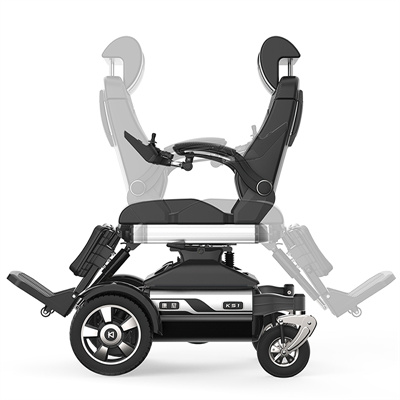Occupational therapy plays a crucial role in wheelchair mobility, as it focuses on helping individuals with disabilities or mobility challenges maximize their independence and functional abilities. Occupational therapists work with wheelchair users to address various aspects of mobility, including choosing the appropriate wheelchair, teaching wheelchair skills, and promoting overall well-being. Here’s an overview of the role of occupational therapy in wheelchair mobility:
- Assessment and Evaluation:
- Occupational therapists conduct comprehensive assessments to understand the individual’s physical, cognitive, and psychosocial capabilities and limitations.
- They evaluate the individual’s mobility needs, including the need for a wheelchair, and assess the most suitable type of wheelchair (manual, power, or specialized) based on the person’s lifestyle, environment, and functional goals.
- Wheelchair Prescription and Customization:
- Occupational therapists work closely with individuals and their healthcare teams to prescribe the most appropriate wheelchair and seating system.
- They ensure that the wheelchair is customized to fit the individual’s body size, shape, and specific needs, considering factors like posture, pressure relief, and comfort.
- Wheelchair Skills Training:
- Occupational therapists provide wheelchair skills training to help individuals learn how to safely and effectively use their wheelchairs.
- This includes techniques for transferring in and out of the wheelchair, navigating various terrains, managing curbs and ramps, and performing daily activities while seated in the wheelchair.
- Posture and Seating Support:
- Occupational therapists address postural and seating challenges by recommending and adjusting seating cushions, backrests, and headrests to promote proper alignment and pressure relief.
- They educate individuals about the importance of maintaining good posture to prevent complications like pressure sores.
- Environmental Accessibility:
- Occupational therapists assess the individual’s home and community environments to identify potential barriers to mobility.
- They provide recommendations and solutions to improve accessibility, such as ramps, wider doorways, and accessible bathrooms.
- Assistive Technology and Mobility Aids:
- Occupational therapists introduce and train individuals on the use of assistive technology, such as power-assisted devices and wheelchair accessories, to enhance mobility and independence.
- Activities of Daily Living (ADLs):
- Occupational therapists work with individuals to develop strategies and adaptations for performing daily activities while using a wheelchair.
- They focus on tasks like dressing, grooming, cooking, and hygiene to promote functional independence.
- Psychosocial Support:
- Occupational therapists address the emotional and psychological aspects of mobility challenges by providing counseling and support.
- They help individuals cope with the emotional impact of disability and promote mental well-being.
- Advocacy and Education:
- Occupational therapists advocate for their clients’ rights and accessibility needs, including advocating for accessible public spaces and transportation.
- They educate individuals, caregivers, and communities about disability awareness and inclusion.
- Follow-Up and Maintenance:
- Occupational therapists monitor the individual’s progress and address any changes in mobility needs over time.
- They provide ongoing support and adjustments to ensure the wheelchair remains appropriate and functional.
Occupational therapy is a collaborative process that empowers individuals with disabilities to achieve greater independence, improve their quality of life, and participate fully in their communities. Occupational therapists tailor their interventions to the unique needs and goals of each individual, helping them navigate the challenges of wheelchair mobility with confidence and success.




















